1000u opens 10x, position value 10000u 2000u opens 5x, position value 10000u value is the same, but the liquidation price is different, so do not focus on the liquidation price in trading, what matters is the stop loss.
True masters of cryptocurrency trading simplify matters; they repeat simple tasks. This short trading model has a win rate of up to 98.8%. Learning it allows you to easily turn 100,000 into 10,000,000, focusing solely on this one model.
I met a friend from Fujian who likes to do short trades, particularly enthusiastic about many techniques. In just a few years, starting small and growing big, he now makes a living by trading cryptocurrencies. After refining his 'technique' and practicing it this year, with a capital of 170,000, he has reached 60,000,000 in less than a year. I hope sharing this will help everyone!
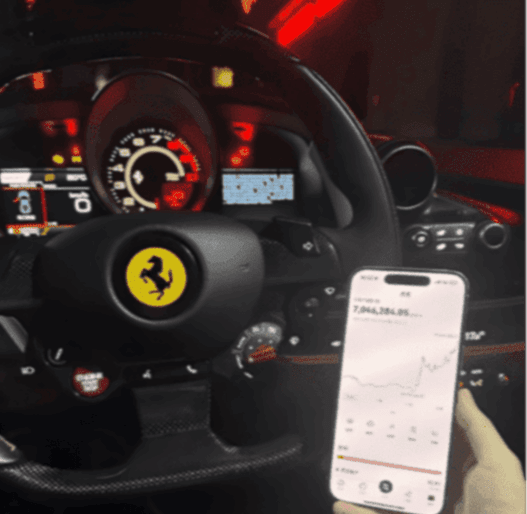
Methods for trading cryptocurrencies:
1. Make large position purchases of mainstream value coins in spot trading (do not trade contracts), regardless of whether they rise or fall; hold on for the medium to long term based on the entry price, and use rolling strategies (increasing or decreasing positions).
When encountering a market crash, don't panic if the four-hour chart does not break the twenty-day moving average for several reasons:
a. Explosive Contracts: Without the right tools, don't easily play with contracts; they are completely different from spot data. Preserve your capital to continue enjoying the benefits of a bull market!
b. Pullback Demand: After mainstream value coins surge, they typically need to pull back to the five-day moving average or even the ten-day moving average to gain energy for further upward movement!
C. Cutting Leeks: Retail novices love to chase highs and sell lows; after retail investors chase highs, the big players will quickly drop the price to scare retail investors into cutting losses.
2. For profitable swing trades, reduce positions in advance or sell in batches at high levels to lock in profits.
3: Preemptively set orders at the daily level's five-day, ten-day, and thirty-day moving averages, gradually accumulating positions at low levels.
4: Based on the life-line trading strategy + judging the trend of rises and falls, if the trend changes and effectively breaks below, reduce positions promptly when pulling back to the life line.
5. When there is a sharp rise, you must have risk awareness and not blindly chase highs. During a sharp drop, you should have opportunity awareness and accumulate positions gradually at low levels.
6: Take profits by reducing positions appropriately to avoid rollercoaster trading. For bottom-fishing orders, it's recommended to set stop-loss orders to protect your capital.
7: If the direction is unclear, it is better to miss out than to make a mistake; preserving your capital allows you to smile longer.
No more nonsense!
Share my trading strategies and insights with friends. There is a saying, standing on the shoulders of giants can save you ten years of effort. If fate allows you to see this,
Friends who want to improve their trading skills should watch more and study carefully.
Viewing the market with a developmental perspective is a state of infinite possibilities.
How should this sentence be understood?
In simple terms, it means whenever you have time, open your computer and see if you can make a trade to earn some money.
Previously, I introduced intraday short-term trading, which has principles and techniques, gaining the favor of many short-term enthusiasts; however, some friends feel that intraday short-term trading requires frequent chart checks, which is too tiring and mentally exhausting.
They want to hold a trade position for a long time but do not want to constantly check the charts; they hope to set large profit targets while keeping losses within a small range. So, is there such a trade?
The answer is affirmative; that is swing trading.
Swing trading is a very popular type of trading, as it brings relatively low pressure to traders while offering significant returns, especially for part-time traders, making it the perfect type of trading.
However, before introducing swing trading, it is necessary to emphasize one point:
Regardless of the trading style, in the trading market, traders are fighting alone and are responsible for their account funds; even if they incur losses, they cannot blame others. It cannot be said that one style is better; it depends on which method you prefer and which is more suitable for you.
Take this swing trading expert I'm going to share with you today as an example; he has been in the industry for over ten years and has tried various trading types and strategies but still frequently faced liquidation.
Until he discovered through swing trading that for him, swing trading is the best type of trading, and the daily chart can provide him with the most accurate trading signals.
Therefore, to achieve stable profits in forex trading, the first thing to do is to find a trading style that suits you, and then refine your trading strategy instead of blindly imitating others.
01: Advantages and disadvantages of short-term and swing trading
Since you want to find a trading style that suits you, you must first understand the pros and cons of each style. Let's take a look at the advantages and disadvantages of short-term trading and swing trading:
Advantages and disadvantages of short-term trading: Advantages:
The market has many intraday short-term volatility opportunities, with numerous trading opportunities based on 1-minute, 5-minute, and 15-minute periods.
Intraday trading models can effectively lock in short-term trading targets, making trading have clear pursuits and assessment indicators.
Intraday trading can lock in risks. By forcibly setting intraday stop-loss based on funds and points, and allocating funds for operation ratios, the implementation of risk control is stronger.
Disadvantages:
Frequent trading carries a higher risk probability.
Staring at the screen for a long time consumes energy, creates significant stress, and is detrimental to health.
Advantages and disadvantages of swing trading
Advantages:
Will choose trades with a higher probability of profit;
Less pressure than intraday trading, as there is no need to focus on charts all day; trading costs are lower than intraday trading.
Disadvantages:
Long holding times bring overnight risks; it requires more patience and stronger principles.
Intraday trading has more potential profit, while swing trading offers more freedom and less pressure. Regarding profitability, any trading style can allow traders to earn profits, but it ultimately depends on personal character, skills, and knowledge.
Next, I will share this swing trading expert's understanding of swing trading and detail his six steps for swing trading.
02: What is swing trading?
Short-term trading was introduced in last week's article. I won't repeat it today, but friends who haven't seen it can check the previous useful content at the end. Today, we will mainly understand swing trading.
Swing trading (also known as swing trading) is a trading strategy that attempts to capture a large wave of upward or downward movement, with holding periods ranging from a few days to several weeks.
Swing traders, while using technical analysis to find trading opportunities, also utilize fundamental analysis to analyze price trends and patterns.
A swing mainly consists of two parts -- the wave and the fluctuation points. As shown in the figure below:
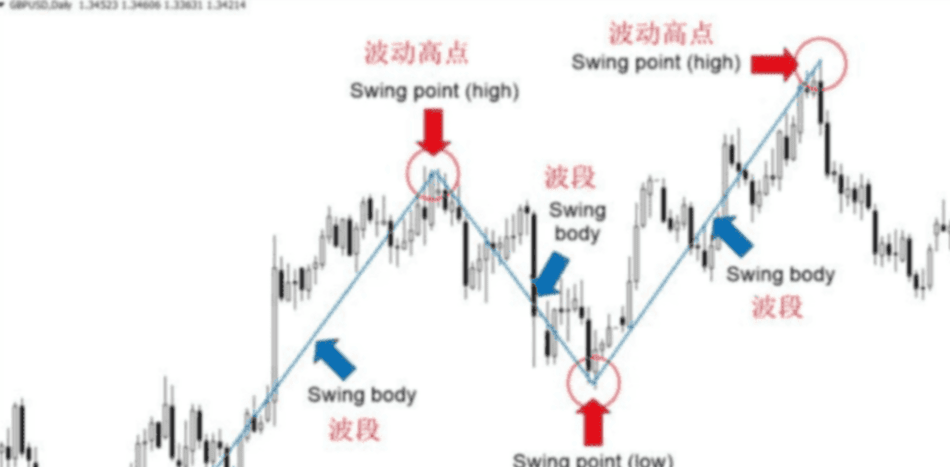
03: How to conduct swing trading?
Next, I will introduce the six steps of swing trading.
1: Focus on the daily chart
Observe the daily chart more, as the daily chart provides the most comprehensive price movements and more reliable price signals.
But be careful: not all daily charts are worth paying attention to.
I mainly use the New York closing price daily chart. Because every 24-hour trading session closes at 5 PM Eastern Standard Time, this is also referred to as the forex market's 'closing time.'
Therefore, I recommend that swing traders use the daily chart; if you have been profitable through the daily chart, you can try starting with the four-hour chart.
In summary, generally speaking, a higher time frame means more reliable price action signals.
2: Draw key support and resistance levels
Draw key support and resistance levels, which is the most important part of the entire process. For swing traders, if they do not find key support and resistance levels, it will be impossible to make a profit.
Now I will introduce two important horizontal lines:
1: Support and Resistance Lines
Support and resistance are points on the chart that endure continuous upward or downward pressure. Support levels are usually the lowest points in all chart patterns, while resistance is the highest point (peak) on the chart.
In addition, support and resistance levels are usually not an 'exact' level; it is best to view them as a range.
2. Trend Line
Although trend lines are one of the most common methods in technical analysis, not all traders use trend lines, possibly because most traders cannot draw correct trend lines.
In general, an upward trend line connects the lows of each fluctuation, while a downward trend line connects the highs of each fluctuation.
3: Judging oscillations
If you have learned to mark support and resistance areas on the daily chart, the next step is to use the high points and low points to determine range fluctuations.
There are three main types of oscillations: upward trend, downward trend, and range trend.
1. Upward Trend
Higher highs and higher lows; the figure below is a typical upward trend:
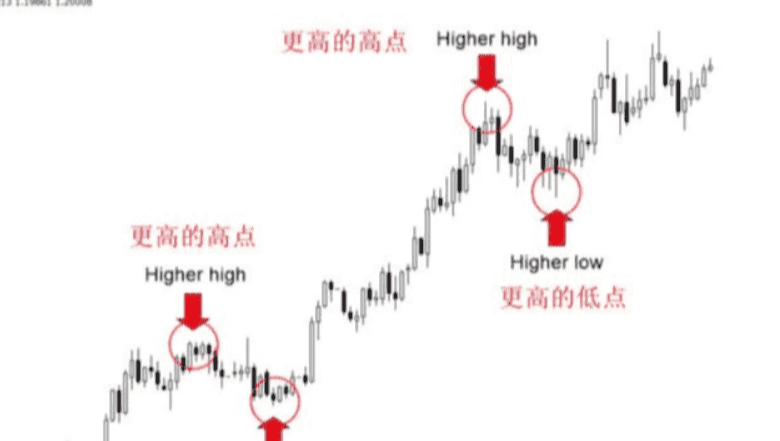
In the above figure, each peak is higher than the previous one; you can buy in this bullish trend.
2. Downward Trend
Lower highs and lower lows; the figure below is a typical downward trend:
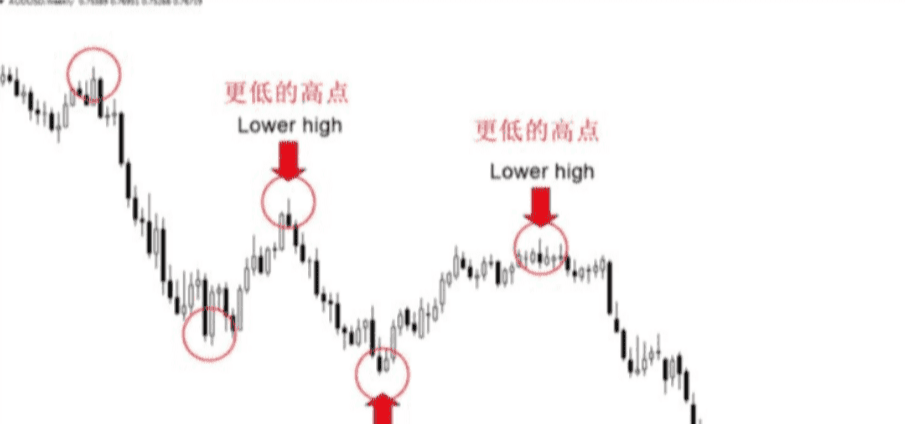
In the above figure, each peak is lower than the previous one, at which point you can sell.
3. Range Trend
Horizontal movement, also known as a consolidation period, as shown in the figure below:
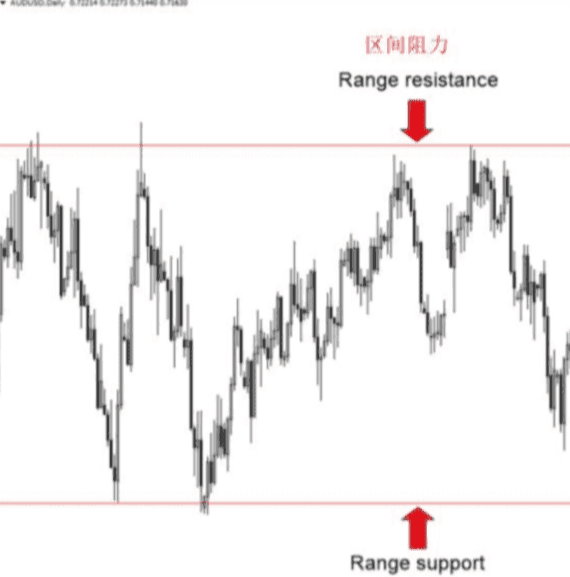
Range trends are the most common type of trend. Although the figure above does not show a bullish or bearish trend, swing traders can still profit within this range, and it may even be easier to profit than in the other two oscillating trends.
What should be done?
Use support and resistance levels. As shown in the figure below, note the two pin bars in the chart:
4: Look for price action signals
Through the above three steps, you have identified the current fluctuations on the daily chart.
1. If the market is in an upward trend, then you should start paying attention to the buy signals at key support levels, as shown in the figure below, where a bullish pin bar has appeared at the key support level.
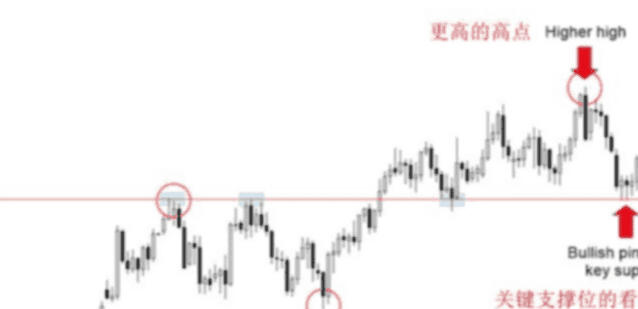
The bullish pin bar in the figure above is a buy signal, indicating that we can profit in a continuous upward trend in the market.
2. If the market is in a downward trend, then you should pay attention to the sell signals at resistance levels, as shown in the figure below:
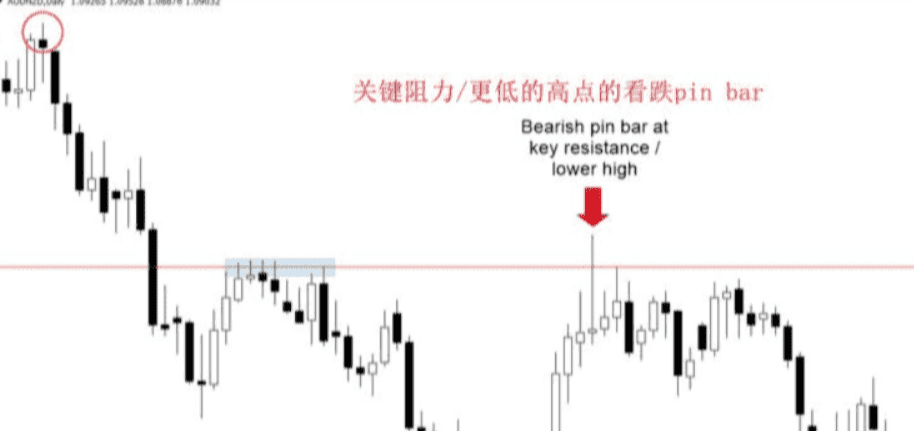
We can use the bearish pin bar shown in the chart as a sell signal.
In fact, for swing traders, capturing the entire swing is very difficult. What we can do is focus as much as possible on swing changes and patiently wait until the price trend is confirmed before entering the trade.
5: Determine exit points
Determining exit points has an important prerequisite: set take-profit and stop-loss before entering the trade. This is because once you enter, your emotions will be influenced by market changes.
So, how do you determine exit points?
It's very simple; it still relies on support and resistance levels, as shown in the figure below:
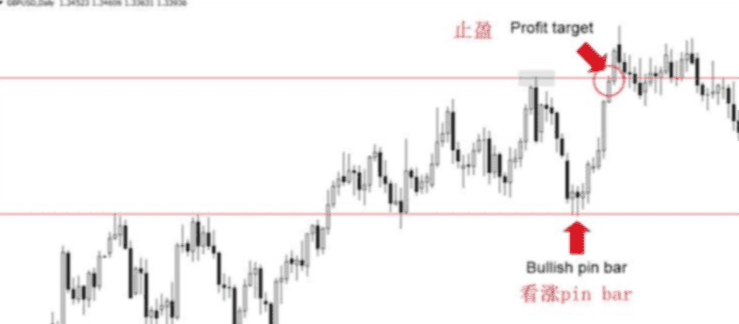
The above figure is a daily chart of GBPUSD: it is clearly an upward trend, and the price has exceeded our set profit target.
When this happens, don't be frustrated; we have captured most of the upward trend. Remember, don't be too greedy when trading.
Let's take a look at the daily chart of AUDNZD: we can also determine the take-profit level based on support and resistance levels, which is the exit point. As shown in the figure below:
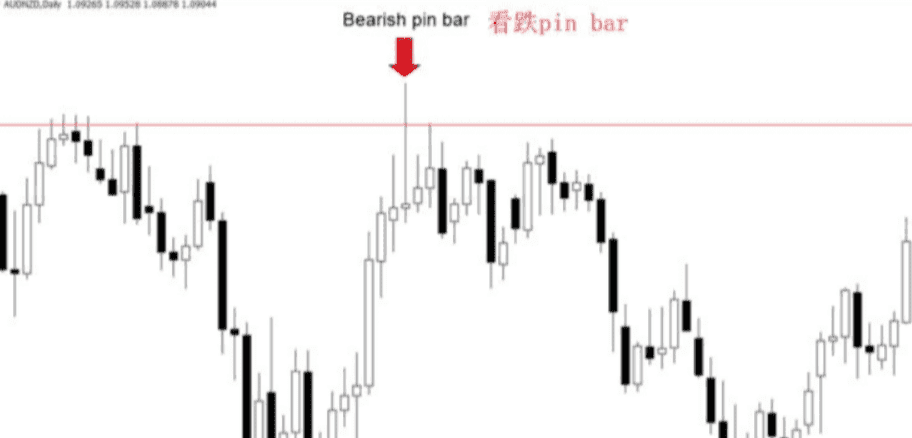
In summary, support and resistance areas and trend lines are the foundation of all trading setups. Once these are determined, the entry and exit points become clear.
6: Calculate and manage risks.
Currently, risk is usually calculated in R multiples, for example, a stop-loss of 100 points and a take-profit of 300 points is 3R. If your capital is $100 and you profit $500, the risk-reward ratio is 5R.
Risk management essentially involves setting stop-loss and take-profit levels:
Stop Loss: The best stop-loss level is at the upper or lower end of the pin bar's tail.
If a bullish or bearish engulfing pattern appears, it is best to set the stop-loss level 10 to 20 points above or below the candlestick.
Take profit: Taking profit is still related to key support and resistance levels. For swing traders, the key to profitability is to capture the fluctuations between support and resistance.
If an upward trend appears in the market and a bullish pin bar forms at the support level, set the take-profit at the next key resistance level.
Old Ma only engages in real trading, the team still has positions available, hurry up to join ##BNBChainMeme热潮

